UK wildlife is in trouble. 56% of UK species are in decline. In the UK we have lost 97% of the wildflower meadows we had in the 1930s and hedgehog numbers have fallen from 30 million in 1950 to just 1 million now.
There are hundreds of UK species that need our help so we’ve created this guide to help learners explore native species, their threats and ways that you can help to make small changes to your garden that will help UK wildlife.
STEP ONE: RECORD WHAT YOU SEE OUTSIDE
We have lots of species in the zoo from all around the world, but we have some incredible species here in the UK too. Let’s go and find out more!
It’s time to head outside and investigate. If you have binoculars or if you have a tablet or camera (please ask an adult) it would be great to take these out with you to use. Don’t forget you’ll need your wildlife recording sheet to keep track of everything you’ve spotted!
Download our: Wildlife Recording Sheet
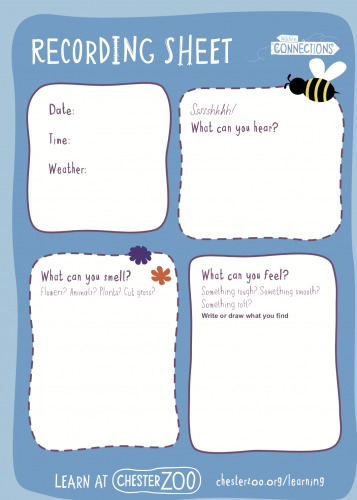
Before you really start exploring, stand with your eyes closed and listen carefully.
- Can you identify what sounds you can hear?
- What can you smell?
As you make your way around your garden or green space, look for both plants and animals when searching for species. Remember you can also explore through touch, so have a look around for different textures like tree bark and fluffy dandelions.
You can record different textures by doing nature rubbings.
Watch our: How to create a nature rubbing? [VIDEO]
Remember to look for signs of animals even if you can’t see the animals themselves such as spider webs.
- What did you find?
- Was there anything you didn’t expect to see?
Most of the plants and animals you will have found are native species.
We’ve got quizzes for different ages to help identify some animals that are native or non-native.
Download our: KS1 Native or Non-native Quiz
Download our: KS2 Native or Non-native Quiz
STEP TWO: WHY ARE NATIVE SPECIES IN TROUBLE?
Over half of the UKs native species are in decline. From invasive species to loss of habitat, there are lots of reasons why plant and animal numbers are going down. Have a discussion and see if you can think of any more.
If you need some clues as to what threats there might be, you can take a look at our UK native species fact file collections.
Download our: UK native species fact file collection
Changes in habitats happen all the time, even in areas local to you. Habitats around Chester Zoo have also changed over time.
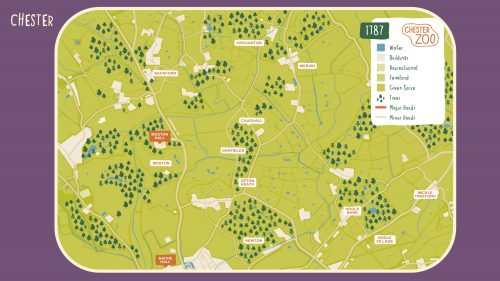
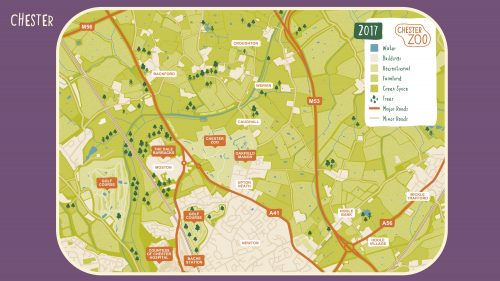
Can you spot the difference?
Take a look at out: Local Habitat Spot the Difference
Now, let’s play a game to find out whether what we do in our gardens can help or harm native wildlife.
Play our: UK Native Species Threats Game
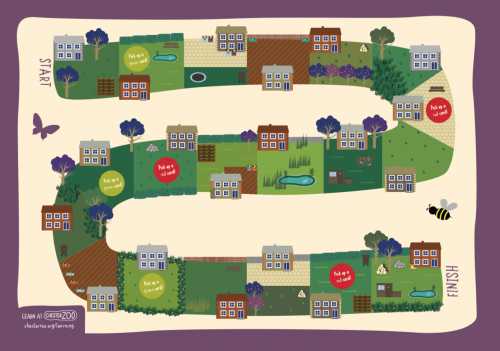
There may be some unfamiliar words in the garden species threats game. So we’ve created a glossary and word search to help.
Download our: UK Native Species Word Search & Glossary
STEP THREE: TAKE ACTION FOR…HEDGEHOGS!
We have lost 50% of rural hedgehogs and 30% of urban hedgehog populations since 2000, but you can help! Learning more about these fascinating creatures and how you can support them in your garden could really help this amazing species.
It’s time to do some research! Using our fact file find out as much as you can about hedgehogs. You could even create a poster.
Download our: Hedgehog Animal Fact File
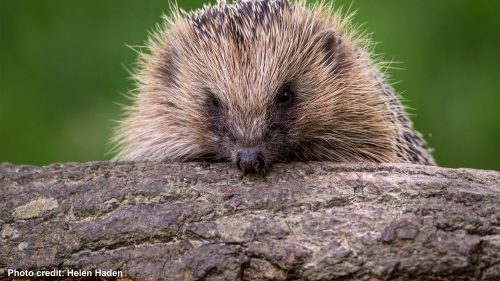
There are some fun and easy ways that you can encourage hedgehogs into your garden. By building a hedgehog house you can provide a safe resting place.
Using the guide below you can make your very own hedgehog house.
Download our: How to build a hedgehog house collection
Hedgehogs can be quite tricky to see as they love to come out at night. It can be difficult for hedgehogs to move from one garden to another if there aren’t holes in fences and hedgerow. So one easy way to help hedgehogs is to simply create a gap for them to move through.
Don’t worry though, if you don’t currently have a hedgehog visiting your garden, you can make your own family of model hedgehogs!
Download our: How to make a model hedgehog
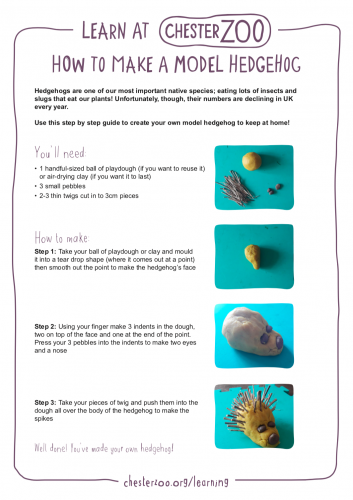
STEP FOUR: SMALL CHANGES CAN MAKE A BIG DIFFERENCE
You’ve taken a look at how you can help protect hedgehogs in your garden or green space and now it’s time to look at what else you can do. There are some easy steps you can take to turn your outdoor space into a haven for local wildlife.
Creating safe spaces for wildlife is a great way to protect the precious wildlife that we love.
How could you help wildlife in your garden? Have a think about some of things you’ve learned through your research; how you might create wildlife friendly spaces or eliminate some of the threats to native species you explored in the game.
Then write your pledge to help UK Species.
Download our: Wildlife Connections Pledges
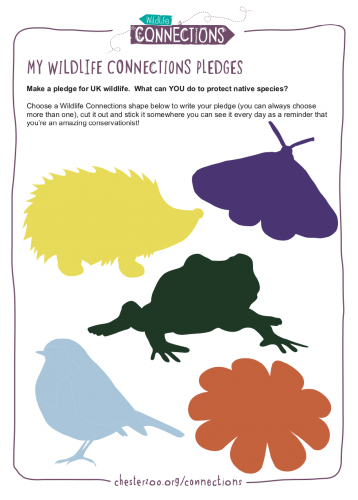
It’s really important to spend time observing and recording wildlife so once you’ve made some changes to your garden or green space why not repeat the wildlife recording activity and see what has changed.
We’d love to see all your activities.